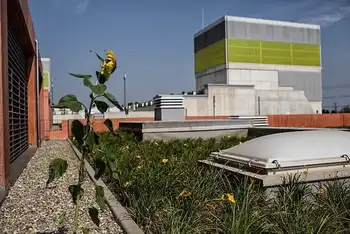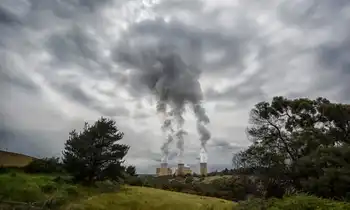The Ibew's New Union Hall in Silicon Valley Is the Largest Commercial Solar Power Installation West of the Mississippi
By -- Source INTERNET WIRE
Substation Relay Protection Training
Our customized live online or in‑person group training can be delivered to your staff at your location.

- Live Online
- 12 hours Instructor-led
- Group Training Available
Designated an official Green Building model by the City of San Jose, the union hall's photovoltaic (PV) solar power system generates 55 kilowatts of power, enough to provide for 70 to 80% of the building's total electrical needs. The use of solar photovoltaics cuts the facility's utility bill in half-and allows IBEW Local #332 to send power back to the utility grid. Solar PV technology has doubled in efficiency during the last two decades.
The independent power system also insulates the building against loss of power from the utility grid in the event of a blackout, as well as from fluctuations in the price of electricity. Having a source of reliable power is especially important in California, with its unpredictable supply of electricity.
IBEW Local Union 332 serves the electrical construction and network connectivity workers of Santa Clara County, a large area that includes Silicon Valley's high-tech businesses, research and development laboratories, microchip manufacturers, and biotech facilities. The Local is providing tours of the building to architects, engineers, contractors, students, and others interested in learning how to use solar energy in new or renovated commercial buildings. Hundreds have toured the union hall thus far.
"The future for solar power is very strong, and the electrical workers have a philosophical and environmental commitment to using solar energy," said Terry Tanner, Business Manager of IBEW Local 332. "We installed this system ourselves because it points the way to the future of electrical generation for the businesses and communities in Silicon Valley. Plus, it lessens the impact to the environment and lowers our energy costs."
"The solar power industry is growing 40% per year annually worldwide," said Project Coordinator and IBEW Local 332 Executive Board Member Jay James. "Many buildings in the 21st Century will be constructed to produce at least some, and eventually all, of their own energy. The IBEW in Silicon Valley will be fully prepared to assume a leadership role in solar technology."
IBEW Local 332's commitment to the use of solar energy is a reflection of the national policy of the International Brotherhood of Electrical Workers and the National Electrical Contractors Association (NECA). "There is a growing consensus that distributed PV systems that provide electricity at the point of use will be the first to reach widespread commercialization," said Mark Ayers, National IBEW Director of Construction and Maintenance.
IBEW Local 332's membership and the Local's Building Committee made a commitment to install photovoltaic during the building's pre-planning phase. Viewing photovoltaics as an emerging technology and as well as an incubating sector for skilled electrical workers, the Local is using its own headquarters as a training facility for IBEW members interested in learning how to install state-of-the-art photovoltaic solar systems.
The building's solar powered photovoltaic system, built into the structure's rooftop and south-side awning, help supply heating, cooling and lighting to the IBEW's 400-seat meeting hall, conference rooms, dispatch and administrative offices. The photovoltaic solar system also operates the building's computers, telephones, fire alarm and security systems. On weekends, electricity produced by the solar array is sent out to the utility grid, and earns credit for the building during the midday hours when the grid needs power the most.
"A couple of big systems in Europe are producing almost one megawatt of power," said George Ingham, International Executive Director of the National Photovoltaic Construction Standards & Certification Partnership (NPCSCP) in Washington, D.C. Ingham and the NPCSCP helped train the electricians of Local 332 to install the solar arrays, and assisted in obtaining the grants that are available to defray in part the costs of the photovoltaic installation.
"As solar gets larger and more difficult and dangerous to install, it moves closer and closer to the electrical industry's mainstream," Ingham said. "It's the responsibility of the electrical industry to train the workers to do these large installations, and the IBEW is in the perfect position to provide the trained electricians."
"Our organization made a presentation to IBEW Local 332's building committee and the membership about the use of photovoltaics in buildings," said Steven Strong, the president of Solar Design Associates of Harvard, Mass., a designer of solar power systems. "We showed them what's happening in Europe and Japan as well as what's beginning to happen in the U.S. The membership voted overwhelmingly to install PV on their building. The IBEW has come to see the importance of distributed on-site electricity generation, using renewable energy sources such as solar, as part of their future."
IBEW Local 332 spent $400,000 on installation of the system. Forty percent of the installation cost will be rebated by the State of California, which rebates $4.50 per watt up to 50% of the total cost of an installation.
The IBEW Local 332 building uses passive and active solar power. Active solar refers to the photovoltaic solar cells (in this case on the building's roof) that convert sunlight into electricity. PV cells are made of layers of purified silicon, manufactured in a process similar to fabricating computer chips.
When struck by sunlight, the specially-treated silicon exchanges electrons from one layer to another, generating an electrical charge, using no moving parts, consuming no conventional fuels, and creating no pollution. Photovoltaics produce direct current (DC), which is sent to an inverter for conversion to alternating current (AC) for use in the building.
Passive solar on the IBEW 332 headquarters includes a large awning that blocks sunlight on the entire south side of the building, saving energy that would otherwise be needed to cool the building, and skylights that admit natural light, saving energy that might be used for artificial lighting.
The main array on the roof of the union hall is composed of PowerGuardâ„¢ tiles, manufactured by PowerLight of Berkeley, Calif. PowerGuard tiles are conventional photovoltaic cells laminated to modular panels of rigid polystyrene foam insulation, in an application that keeps the building cool in the summer and warm in the winter while generating power.











